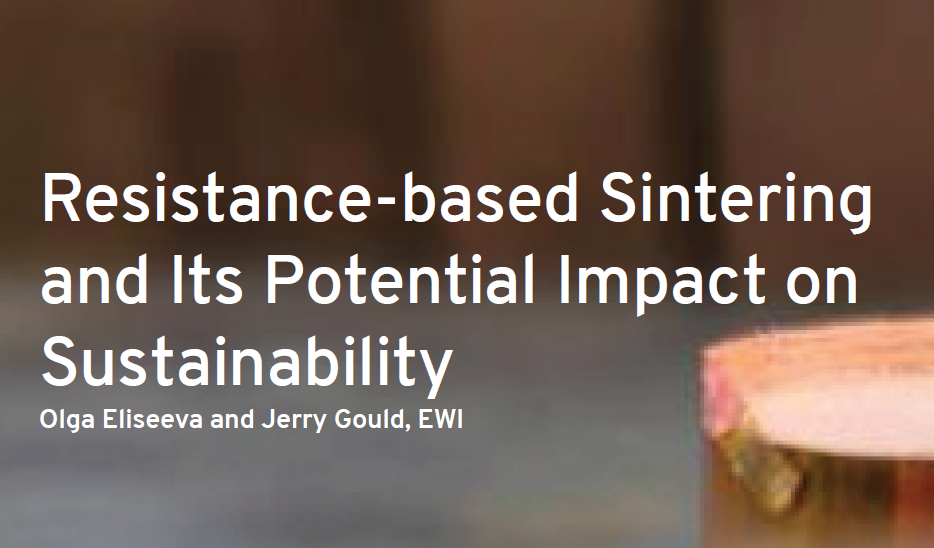

Metal-powder sintering is an attractive production technology due to its ability to create near-net shape products from a variety of materials at a relatively low cost. Conventional methods for conducting sintering in high volumes involve pre-compacting green-state powders and then applying heat-based consolidation using furnaces.
Conventional sintering methods, however, don’t offer the speed, cost-efficiency, energy efficiency, and environmental sustainability that modern manufacturers strive to uphold. This is why EWI’s engineers pursued advances in powder-metal sintering technology to help our clients achieve their production and ESG goals. And we succeeded! EWI pioneered resistance-based sintering (RBS), a new production method that uses a standard resistance welding system to improve upon standard sintering processes.
EWI engineers Olga Eliseeva and Jerry Gould wrote Resistance-based Sintering and Its Potential Impact on Sustainability to describe this novel technology and the possibilities it offers.
Download the paper for free by completing the form on this page.
Complete this form to download the paper:
How It Works: Sintering with Resistance Welding Equipment
RBS accomplishes sintering through the functionality of standard resistance welding equipment. Such systems can readily supply current and force to the powder. The subsequent combination of resistance heating and compressive loading allows rapid consolidation of a range of metal powders. Of note, local application of currents and forces, combined with short cycle times (typically 100ms to a few seconds) minimize required energies for consolidation. Initial estimates suggest that on a per-unit mass basis, these energy reductions (compared to furnace sintering) can be greater than 90%.
For an overview of RBS along with an example of the sintering tooling integrated into a standard resistance welding system, please download the paper.
Benefits & Results
The resulting product is the same as it would be with traditional sintering equipment but with several additional benefits:
- Reduced up-front equipment cost.
- Dramatically reduced energy consumption (>90%).
- Short processing times.
- Support in achieving ESG targets.
- Small-batch and flexible production options.
- Long-term potential to be used for hybrid material development and more.
The paper includes details about how these benefits are made possible through high-speed sintering technologies that are both groundbreaking and simple. We also cover more potential applications that we’re excited to continue developing!
Connect with EWI
To discuss how RBS could directly benefit your company, contact Olga Eliseeva ([email protected]) or Jerry Gould ([email protected]).
Want to learn more about the work of these subject matter experts?
- See Olga Eliseeva’s Award in Technical Excellence
- See Jerry Gould’s BadAssEngineer Recognition